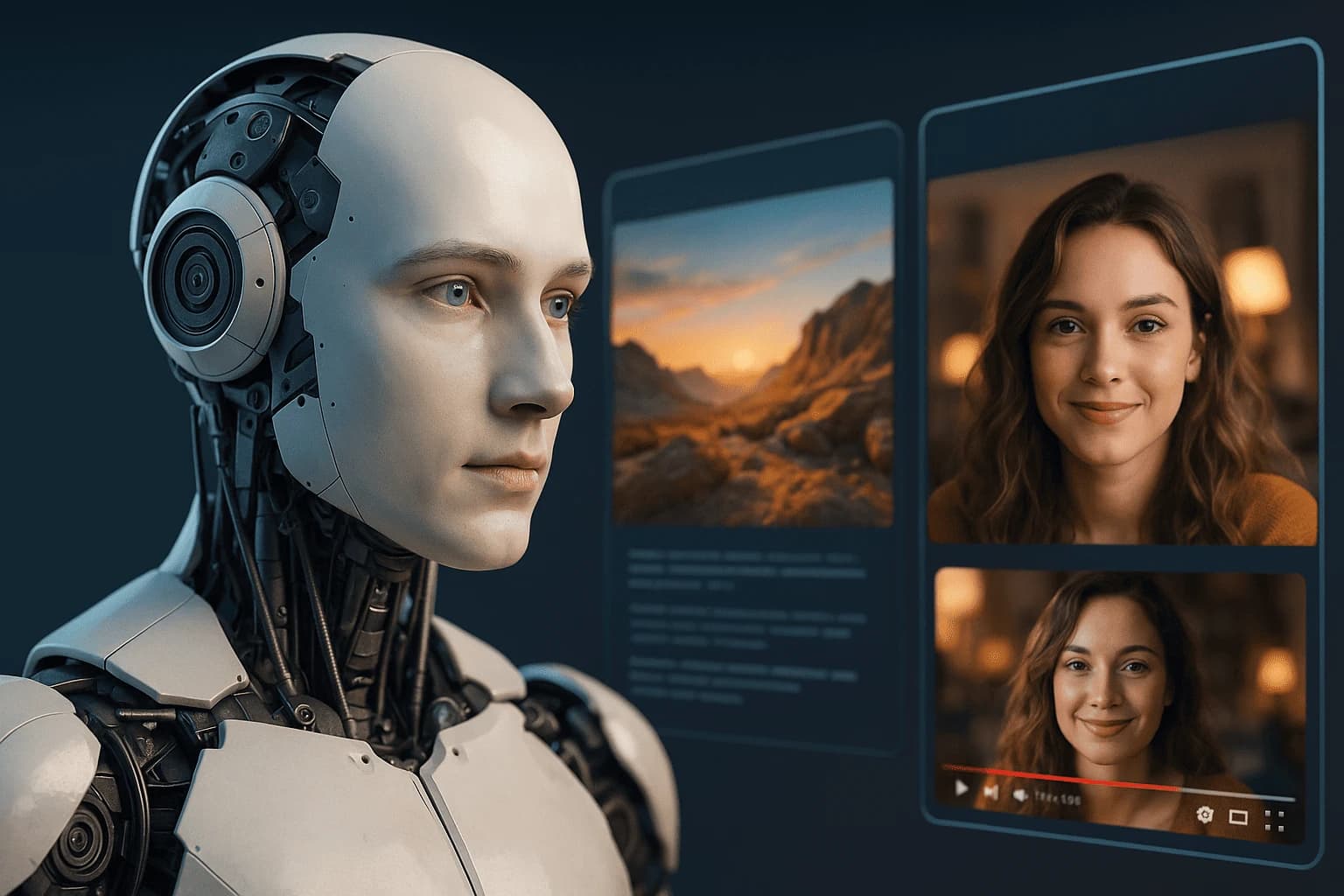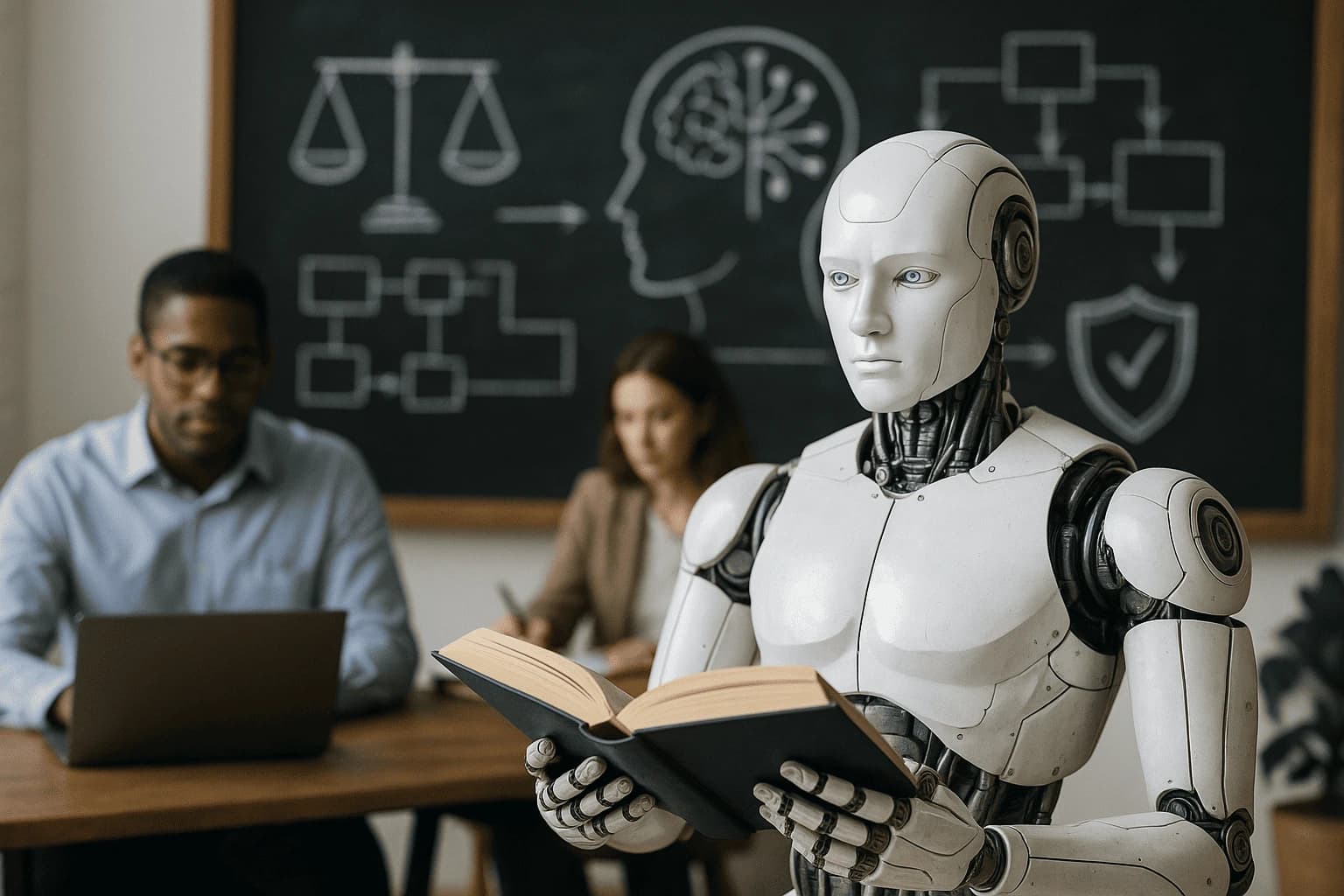
* All product/brand names, logos, and trademarks are property of their respective owners.
In the ever-evolving world of artificial intelligence, a new frontier is reshaping how machines perceive and interact with the world: multimodal AI. Unlike traditional models that process only text or images, multimodal AI systems can understand and generate content across multiple formats — including text, images, audio, and video — often all at once. Think of it as AI with senses, where language meets vision and sound in a single, unified model.
This convergence is more than just a technical milestone — it’s a paradigm shift. As of 2025, multimodal models like Google Gemini AI, Meta’s LLaMA 4, and Amazon Nova are setting new benchmarks in performance and real-world usability. These AI systems can describe an image, answer questions about a video, or even generate scenes from a text prompt — all thanks to their ability to process and "fuse" different types of data.
Why does this matter now? Because we’re at a point where text-only intelligence isn't enough. Whether it’s helping visually impaired users navigate the web, diagnosing diseases from medical scans, or powering the next generation of AI agents and digital assistants, multimodal AI is paving the way for deeper, more natural human–machine interaction.
From a business standpoint, the implications are massive. According to recent market forecasts, the multimodal AI market is set to exceed $8 billion by 2030, with adoption rapidly increasing in sectors like healthcare, marketing, education, and content creation. It's no longer a futuristic concept — it’s here, growing fast, and changing everything.
In this blog, we’ll break down how this technology works, spotlight the real-world use cases transforming industries, and explore both the opportunities and ethical challenges of this powerful AI evolution.
At the heart of multimodal AI lies a sophisticated architecture built to process and combine different types of data — text, images, video, and audio. These systems rely on three core components: input encoders, a fusion layer, and output modules.
Each modality — whether it's an image or a sentence — is first passed through a specialized encoder (like a CNN for images or a transformer for text) that converts raw input into numerical representations, or embeddings. The fusion layer then blends these embeddings into a shared representation space, enabling the model to interpret cross-modal relationships. Finally, the output module generates results, which could be text descriptions, predicted labels, or even generated video.
This fusion process is what gives multimodal models their unique power. It allows them to "understand" context across formats — such as identifying sarcasm in a meme, or linking a voice command to a real-time visual feed.
Several groundbreaking models have led the charge:
OpenAI’s CLIP: Combines vision and language for tasks like zero-shot image classification by learning from text–image pairs at scale.
Google Gemini: Integrates video, audio, and text inputs, supporting dynamic, real-time multimodal interactions — including agentic reasoning and spatial understanding.
Amazon’s Nova: A generative foundation model trained on multiple modalities with real-world e-commerce and cloud applications.
RT-2 by Google DeepMind: Blends vision, language, and action into a single model that can interpret and respond in physical or digital environments.
These models are not just experimental — they’re powering real products like Google Search’s AI Mode, Meta AI’s visual Q&A tools, and multimodal AI chatbots that can analyze images or answer video-based questions.
Traditional AI models are limited to single types of input. A text-only chatbot, for instance, struggles to understand an image or interpret sound. In contrast, multimodal AI can synthesize insights from several sources, enabling smarter, more adaptive systems.
For example:
In healthcare, a multimodal AI could read a patient’s radiology scan, analyze accompanying notes, and predict possible diagnoses with greater accuracy.
In education, it can watch a student’s gestures, listen to speech, and tailor responses for better engagement.
Moreover, the fusion allows for generalization across tasks — a capability once considered elusive. Multimodal models trained on diverse inputs often outperform their specialized counterparts in complex, real-world scenarios.
In short, the magic of multimodal AI lies in its architecture — a powerful fusion engine that brings together different sensory streams into a unified intelligence. And as we move toward a world where information isn’t just textual but visual, auditory, and interactive, this technology is poised to become the new standard.
Multimodal AI isn't just a research marvel — it's already disrupting real-world industries in bold and practical ways. From healthcare to marketing, and autonomous vehicles to creative design, the integration of text, image, and video inputs is unlocking use cases that were previously out of reach.
Healthcare: AI systems now analyze X-rays, read doctors’ notes, and suggest diagnoses in seconds. For example, DeepMind’s MedPaLM M integrates image scans with medical history to assist radiologists and reduce diagnostic errors.
Retail & E-commerce: Apps like Amazon StyleSnap allow users to upload an image and get AI-generated suggestions on what to buy, blending vision and product data.
Education: Platforms use multimodal AI to tailor content based on student performance, facial expressions, and spoken queries — delivering personalized learning that reacts in real time.
Autonomous Vehicles: Self-driving cars interpret road signs (visual), voice commands (audio), and GPS directions (text) simultaneously, thanks to multimodal decision engines.
Marketing & Design: Tools like Adobe Firefly use multimodal prompts (text + sketch) to generate high-quality digital content in seconds — shifting how designers and advertisers operate.
These examples represent just the tip of the iceberg. As new models emerge, the boundary between digital and physical interaction continues to blur.
We're now witnessing the rise of agentic AI — intelligent systems that can observe, reason, and act across multiple modalities. These aren’t just chatbots; they are multimodal agents capable of interpreting a scene, receiving instructions, and responding in a goal-driven way.
Picture a smart assistant that:
Watches a video tutorial with you and answers questions in real time.
Sees an image of a broken appliance and guides you through the fix.
Understands your verbal feedback, processes gestures, and suggests next steps.
Projects like RT-2 (robotics transformer) and Gemini Pro are laying the groundwork for AI co-pilots in real-world environments — from remote medical guidance to AI tutors that interact through speech, writing, and visuals simultaneously.
These agents represent a shift from passive interaction to active collaboration.
The global adoption of multimodal AI is accelerating. According to Mordor Intelligence, the market value of multimodal AI is projected to reach USD 10.81 by 2030, up from just under $3 billion in 2025 — a CAGR of over 29%.
North America leads in deployment, driven by Big Tech and startups innovating around customer service, search, and enterprise software.
Asia-Pacific is catching up fast, with China, South Korea, and India investing in multimodal research and generative platforms for education, health, and language diversity.
Europe, with its AI Act, is focusing on ethical and regulatory alignment — opening the door to responsible innovation and privacy-first multimodal systems.
The growing affordability of compute, expansion of open-source models, and hybrid training techniques (like fine-tuning vision–language systems on smaller datasets) are making these tools more accessible than ever.
From life-saving applications to creative breakthroughs, multimodal AI is transitioning from lab experiments to everyday tools, changing how industries operate and how people engage with information.
With great power comes great responsibility — and multimodal AI introduces serious ethical challenges. The same technology that enables image-captioning and video generation can also be exploited to create hyper-realistic deepfakes, manipulative content, and biased decisions at scale.
Deepfakes are becoming harder to detect as models learn to mimic facial expressions, gestures, and voices across modalities. This poses a growing threat in politics, media, and security.
Bias amplification is another critical issue. Multimodal models trained on biased datasets can propagate harmful stereotypes not just in text, but in images and video as well. An AI model that misinterprets cultural context can cause real-world harm — from medical misdiagnoses to legal misjudgments.
Surveillance and privacy are heightened concerns, especially as multimodal agents become embedded in cameras, voice assistants, and workplace tools. Without proper safeguards, these systems could lead to AI-powered surveillance capitalism or invasive government monitoring.
Global regulators are starting to respond. The EU AI Act, passed in 2024, categorizes general-purpose multimodal models as “high-risk,” requiring companies to disclose data provenance and model transparency. Other regions are exploring AI labeling laws and synthetic content disclosures.
Multimodal models demand massive computational resources. Training foundation models like Gemini Ultra or Meta’s LLaMA 4 multimodal can consume thousands of GPU hours, resulting in a hefty carbon footprint.
Environmental impact: A single training run of a large multimodal model can emit as much carbon as five average cars over their entire lifespan.
Infrastructure demands: Real-time video understanding and audio synthesis require low-latency processing — often pushing developers to rely on powerful (and centralized) cloud platforms.
Inequitable access: Small startups, researchers in the Global South, and open-source communities often lack the resources to train or run such models, exacerbating the digital divide.
New techniques like sparse expert routing, distillation, and multimodal transfer learning offer hope by making models more efficient — but the field must still grapple with its sustainability problem head-on.
A growing tension exists between corporate dominance and open innovation in the multimodal AI ecosystem.
On one side, tech giants like Google, Amazon, and Meta are releasing powerful but often closed-source models, citing security, misuse, and IP protection.
On the other, communities like LAION, Hugging Face, and OpenMultimodal are fighting for transparency, reproducibility, and equitable access.
This dynamic affects who gets to build with AI — and who gets left behind.
Imagine a world where only a handful of companies control the tools to understand and generate multimodal content. Now imagine one where developers everywhere can build, audit, and improve these tools collaboratively. The future of AI may depend on how this balance is struck.
Multimodal AI is undeniably powerful. But to ensure that power uplifts rather than exploits, we must tackle the risks, reduce resource barriers, and democratize development. That’s how we unlock the full promise of AI fusion — for everyone.
We are entering a new era of artificial intelligence — one where machines don't just read or see, but perceive the world in full sensory context. Multimodal AI is no longer just a buzzword or a lab prototype. It’s powering real applications, redefining industries, and shaping how we interact with technology on a deeply human level.
From diagnosing diseases using scans and medical notes, to helping creators generate full videos from a few lines of text, multimodal models are changing what’s possible. The fusion of text, image, video, and audio is creating smarter, more intuitive AI systems that can reason, create, and act across formats. And as we’ve seen with models like Google Gemini, OpenAI’s CLIP, and Amazon Nova AI, the applications are already here — and growing fast.
But this power comes with profound responsibility. Ethical oversight, compute sustainability, and equitable access must remain front and center as we build the next generation of AI tools. The future of multimodal intelligence shouldn't just belong to big tech — it should be a global movement shaped by developers, researchers, and communities worldwide.
So, whether you're a coder looking to build AI products, a creative exploring new storytelling mediums, or a business leader aiming to stay ahead — now is the time to engage with multimodal AI. Learn it. Test it. Shape it. The way we interact with machines is being reimagined — and you have a chance to help define what comes next.

1 December 2025

22 November 2025
No comments yet. Be the first to comment!